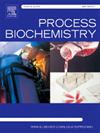膳食纤维的提取方法及其对生物活性的影响:综述
IF 3.7
3区 生物学
Q2 BIOCHEMISTRY & MOLECULAR BIOLOGY
引用次数: 0
摘要
每天都有大量的食品加工副产品被消耗掉,这些副产品中含有丰富的高活性营养物质:膳食纤维(DF)。膳食纤维被营养学家定义为第七大营养素,对人体健康有诸多益处,如改善肠道菌群、减少肥胖和降低心血管发病率。因此,需要采用合适的提取方法来获得高产量和高质量的 DF(包括可溶性膳食纤维和不可溶性膳食纤维)。膳食纤维提取方法能有效改善膳食纤维的结构和功能特性,因此受到越来越多的关注。然而,据我们所知,目前还没有研究系统地分析和总结不同膳食纤维提取方法的差异及其对膳食纤维成分、结构和功能活性的影响。本文综述了近十年来研究人员探索的 DF 提取方法(物理法、化学法、生物法和组合法),总结了不同提取方法对不同来源 DF 结构和功能活性的影响。此外,还讨论了 DF 不同提取方法的机理、比较分析和未来趋势。该综述将极大地促进我国植物及副产物资源的开发利用,为我国人民对高品质 DF 的需求提供理论依据。同时,本综述还可为选择合适的 DF 提取方法,更好地实现提取 DF 的产业化提供理论指导。本文章由计算机程序翻译,如有差异,请以英文原文为准。
Extraction methods of dietary fiber and effect on bioactivity: A review
A large number of food processing by-products are consumed every day that are not utilized and are rich in highly active nutrients: dietary fiber (DF). DF has been defined by nutritionists as the seventh macronutrient with many benefits to our health, such as improving intestinal flora, reducing obesity and lowering cardiovascular morbidity. Thus, suitable extraction methods are needed to obtain high yields of high and quality DFs (including the soluble dietary fiber and insoluble dietary fiber). DF extraction methods have received increasing attention because it is effective in improving the structure and functional properties of DF. However, to the best of our knowledge, no study has systematically analyzed and summarized the differences in different DF extraction methods and their exert on DF composition, structure and functional activities. In this paper, the extraction methods (physical method, chemical method, biological method and combined method) for DF which have been explored by researchers in the last decade are reviewed, and the effects caused by different extraction methods on the structure and functional activity of DF from different sources are summarized. Moreover, the mechanism, comparative analysis and future trends of different extraction methods for DF are discussed. This review will greatly promote the development and utilization of plant and by-product resources in China, and provide a theoretical basis for the demand of high-quality DFs for our people. Meanwhile, this review can provide theoretical guidance for selecting suitable DF extraction methods and achieving better industrialization of extracted DF.
求助全文
通过发布文献求助,成功后即可免费获取论文全文。
去求助
来源期刊

Process Biochemistry
生物-工程:化工
CiteScore
8.30
自引率
4.50%
发文量
374
审稿时长
53 days
期刊介绍:
Process Biochemistry is an application-orientated research journal devoted to reporting advances with originality and novelty, in the science and technology of the processes involving bioactive molecules and living organisms. These processes concern the production of useful metabolites or materials, or the removal of toxic compounds using tools and methods of current biology and engineering. Its main areas of interest include novel bioprocesses and enabling technologies (such as nanobiotechnology, tissue engineering, directed evolution, metabolic engineering, systems biology, and synthetic biology) applicable in food (nutraceutical), healthcare (medical, pharmaceutical, cosmetic), energy (biofuels), environmental, and biorefinery industries and their underlying biological and engineering principles.
 求助内容:
求助内容: 应助结果提醒方式:
应助结果提醒方式:


